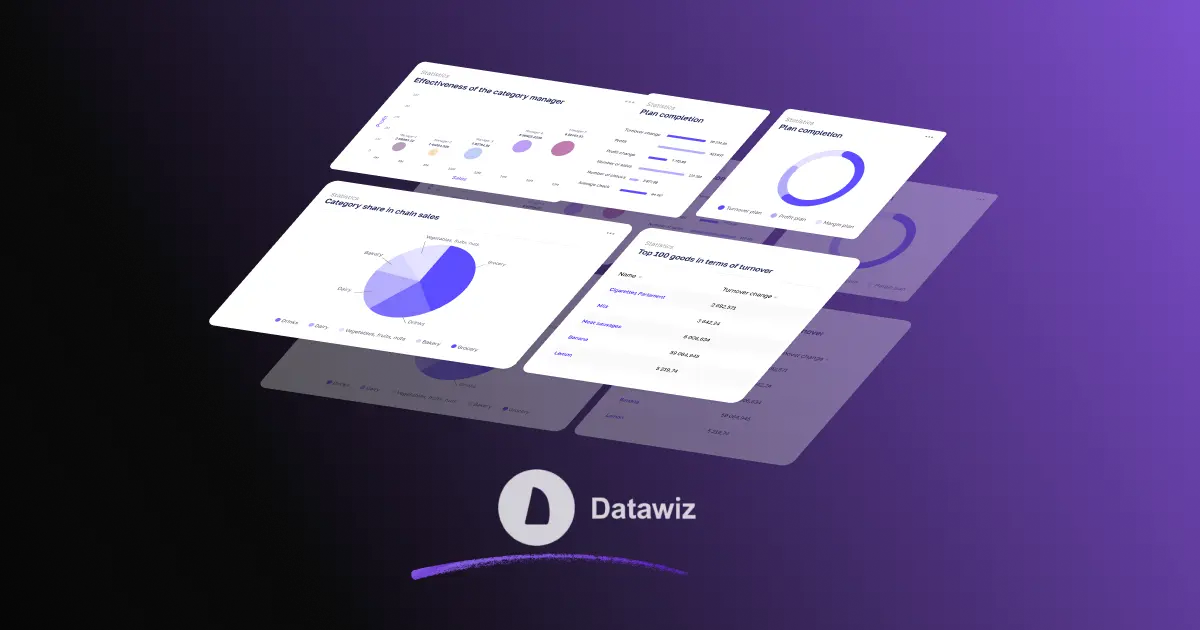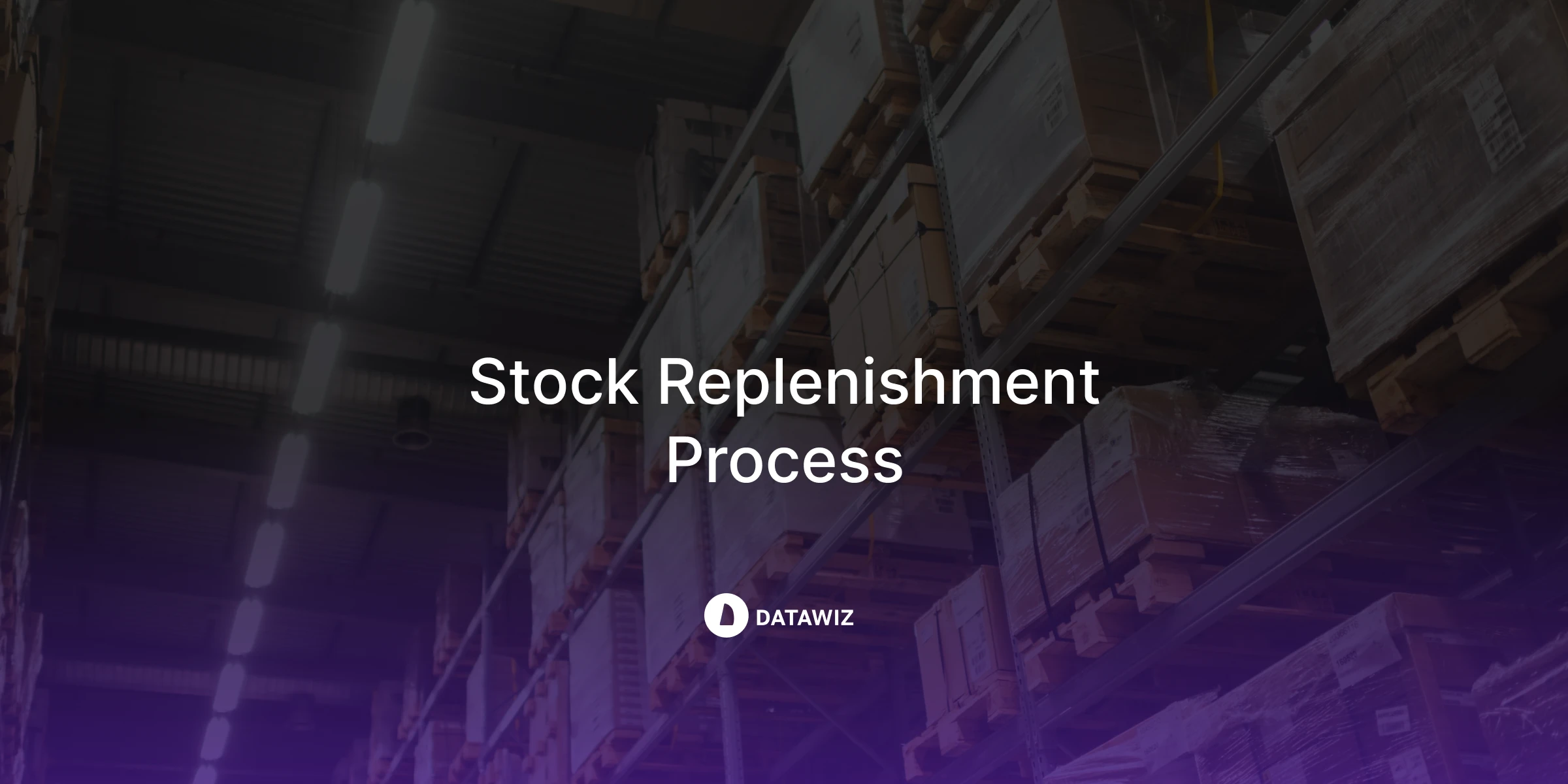What is a BI System?
In a rapidly developing business environment, the ability to quickly analyze large amounts of data and make effective decisions based on it becomes a key success factor. This is what BI systems (BI Business Intelligence) were developed for. A BI system is a software package designed for collecting, processing, analyzing and visualizing data to support management decisions.
BI-system integrates data from various sources (ERP-systems, CRM-systems, databases, spreadsheets, web resources and other channels), converts them into an easy-to-analyze format and provides users with real-time reports,dashboardsand forecasts. The main goal of a BI system is to turn raw data into useful business information that helps management and employees make informed decisions.
What Tasks a BI-System Solves in Business
BI-systems help to solve a wide range of tasks related to data analysis and decision-making:
- Sales analysis - tracking sales dynamics by regions, stores, product categories and customer segments.
- Inventory management - analyze turnover, prevent shortages and surpluses of goods, increase turnover.
- Marketing efficiency assessment - analyzing the results of advertising campaigns, audience segmentation and determining the most profitable promotion channels.
- Financial control - tracking revenues and expenses, building forecasts and managing budgets.
- Optimization of business processes - identifying bottlenecks in operations, automating routine tasks and improving logistics.
- Working with customers - analyzing customer behavior, forecasting needs and forming personalized offers.
- Identification of business weaknesses - BI tools allow you to detect problem areas in the company's operations and suggest ways to optimize them.
BI systems allow managers and analysts to quickly identify deviations, predict the development of the situation and develop strategies to improve business efficiency.
When Does a Company Need to Use BI Analytics (Business Intelligence)?
There are several signs that signal the need to implement a BI system:
- Large amount of data - data is stored in different systems, tables, reports and requires a lot of time to collect and process.
- Lack of transparency in the business - it is difficult to understand which processes are working efficiently and which ones need improvement.
- Difficulties with decision making - decisions are made intuitively, without accurate data and analysis.
- Duplication of work - the same reports are created manually in different departments, resulting in inconsistent data.
- Inability to respond quickly to change - lack of up-to-date data prevents you from quickly adapting to market conditions.
- Rapid growth of the company - as the scale of the business increases, it becomes more difficult to control processes and manage departments, which makes the use of analytical systems extremely important.
- Difficulties in assessing staff efficiency - if it is impossible to track the productivity of individual employees or control the work of a certain department, BI analytics can help solve this problem.
If at least one of these signs is present in a business, it means that a BI system will help to put data in order, speed up decision-making and increase the company's competitiveness.
How to Choose a BI System?
When choosing a BI system, it is important to consider several key factors:
- Interface and visualization convenience - reports and dashboards should be clear and easily customizable.
- Integration with existing systems - the ability to connect to ERP, CRM, databases and external services.
- Functionality - tools for reporting, forecasting, data clustering and advanced analytics.
- Performance - ability to process large volumes of data in real time without delays.
- Flexibility and scalability - the ability to expand functionality and connect new data sources as your business grows.
- Cost - it is important to consider not only the license price, but also the cost of implementation, support and staff training.
- Mobile application- not all BI solutions support operation on smartphones, which plays a key role in modern business processes.
How do BI Systems Work?
The operation of a BI system involves several key steps:
1. Data Collection
The first step collects receipt data into an intermediate database
ETL processes (Extract, Transform, Load) are used tointegrate the data. These processes extract data from different systems, transform it into a common format and load it into the data warehouse.
2. Data Storage
Data collected from different sources is usually stored in a dedicated data warehouse or databases. A BI system combines disparate data into a single model, ensuring the integrity and availability of information.
3. Data processing and analysis
After collecting and loading data into the warehouse, the processing and analysis stage begins:
- Analytical model building;
- Data segmentation;
- Identification of dependencies and patterns;
- Forecasting based on historical data.
4. Visualization and report building
Analysis results are presented in the form of visual reports and dashboards. BI systems allow you to build complex charts, tables, graphs, KPIs and other metrics.
5. Monitoring and control
BI-system provides the ability to continuously monitor business indicators in real time. For example, you can track sales volume, profit level, effectiveness of marketing campaigns, etc.
Benefits of BI Systems
Implementing BI systems provides companies with a number of benefits:
- Data-driven decision making - Access to accurate and up-to-date information improves the validity of decisions.
- Automating reporting - Automated report generation saves time and reduces the risk of errors.
- Identifying hidden patterns - Analyzing data helps you find new market opportunities and improve your product.
- Rapid response to market changes - Real-time KPI monitoring allows you to react quickly to threats and opportunities.
- Improved business efficiency - Data-driven optimization of business processes reduces costs and increases profits.
Disadvantages of BI Systems
Despite the significant advantages, BI systems have their limitations:
- Staff qualification requirements - BI systems require specialists with deep knowledge of analytics. Software with strong support that will provide an easy integration and customization process for efficient operation.
- Limited feasibility - BI software is not a one-size-fits-all solution for all business problems and does not replace automated systems.
- High implementation cost - Implementing a BI system requires a substantial investment.
How to Implement a BI System: Step-By-Step Process and Important Nuances
Implementing a BI system is a strategically important process that requires a comprehensive approach and the participation of analysts, developers and end users. For a successful implementation, it is necessary to carefully plan the steps, take into account the specifics of the business and be prepared to spend time and resources. Let's consider the main steps of this process:
- System setup and integration
- Creating a data warehouse;
- Integrating with data sources;
- Setting up algorithms for data processing and visualization BI analysts and developers work together to ensure that the system collects, analyzes and displays data correctly.
- Testing the BI system
Before the system is launched, testing must be performed. The correctness of the displayed data, the operation of dashboards, the detail of reports and usability are checked. Both technical specialists and future users can participate in testing.
- Staff training
Even the most advanced BI system will not be useful if employees do not know how to use it. For this purpose, it is necessary to:
- Conduct trainings and webinars;
- Develop instructions and video tutorials;
- Organize user support at the first stages of work Well-trained employees will be able to quickly learn BI tools and effectively apply them in their work.
- Implementation and further optimization
After testing and training, system operation begins. Analysts continue to support the process, helping users adapt and analyzing new company needs.
Popular BI Systems
Some of the most popular BI platforms include:
- Power BI (Microsoft) - One of the market leaders, characterized by high integration with Microsoft products.
- Tableau - A strong data visualization tool with extensive integration capabilities.
- Qlik Sense - A system with a powerful mechanism of associative data analysis.
- Looker - Data visualization and deep integration with Google Cloud.
- SAP BusinessObjects - Enterprise-level system with powerful analytics tools.
BI-System for Analyzing Chain Store Datawiz
Datawizis a powerful BI system that is specifically designed for retailers. It allows you to analyze data in real time, identify growth points, forecast demand and improve business efficiency. With intuitive reports, dashboards and flexible customization tools, the service helps you reduce analysis time and make informed decisions faster.
Benefits of Datawiz for store chains:
- Connect to any data source;
- Deep analysis of sales, inventory and customer behavior;
- Customizable reports and automatic data visualization;
- User-friendly interface and easy setup.
By implementing Datawiz BI system, you will gain control over all business processes, improve the quality of decisions and increase the profitability of the store network.
 What's new?
What's new?





 No credit card required
No credit card required